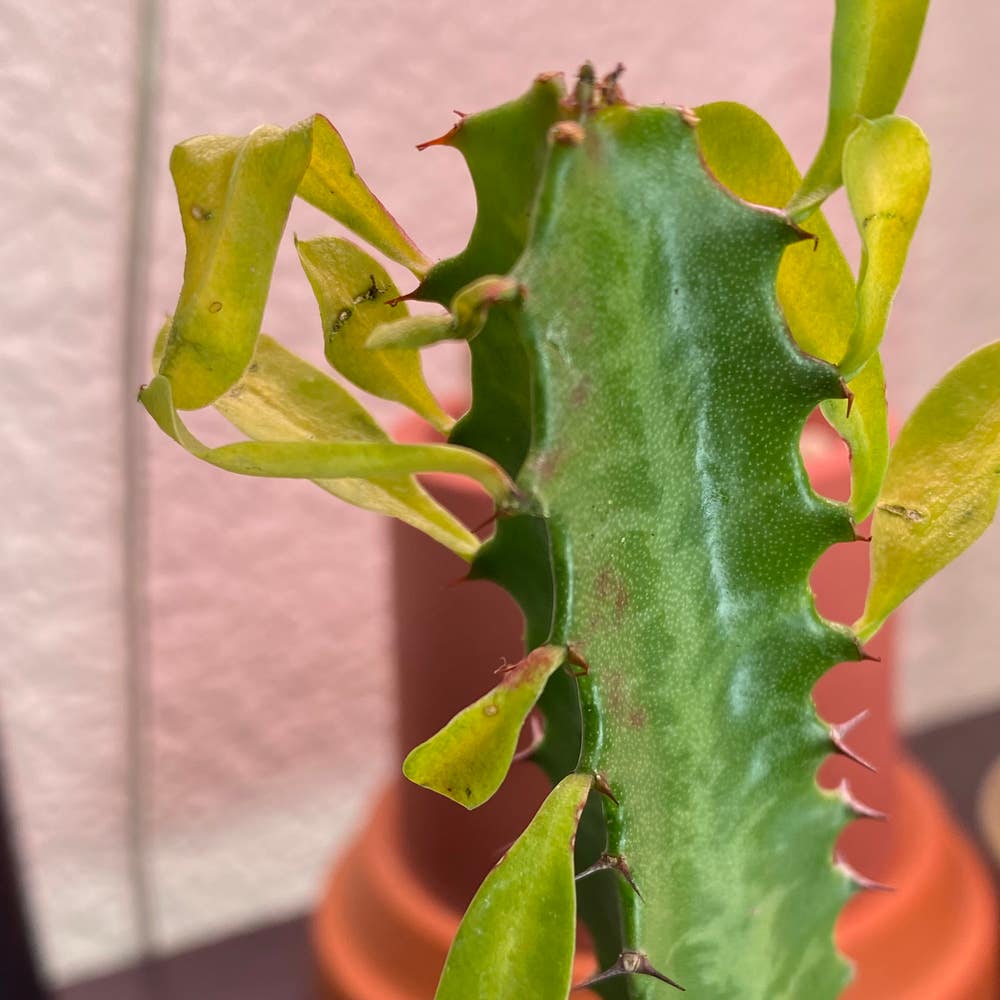How to Get a Euphorbia adenochlora to Bloom
Mar 12, 2024•5 min read
Ignite your Euphorbia adenochlora's blooming potential for a dazzling garden display! 🌟🌼
- Bright, indirect light and 65°F to 70°F are key for blooms.
- Winter dormancy prepares for spring's floral show.
- Prune strategically to promote health and flowering.
Optimal Light and Temperature for Show-Stopping Blooms
🌞 The Sweet Spot of Sunlight
Bright, indirect light is the jackpot for your Euphorbia adenochlora's blooming ambitions. Aim for a daily dose of this golden glow to encourage the shy flowers to make their debut. Too much direct sun can lead to a drama of scorched leaves, while too little results in a bloomless performance.
🌡️ Temperature Tweaks for Timely Blooms
The optimal temperature range for flower induction is a cozy 65°F to 70°F (18°C to 21°C). If your plant's environment strays from this sweet spot, you might find yourself with a lackluster floral show. Adjust your indoor climate to mimic these conditions, steering clear of drafts and heat sources that could throw a wrench in the works.
Seasonal Rhythms and Blooming Cycles
🌸 Syncing with Nature's Clock
Understanding the natural blooming season of Euphorbia adenochlora is key to unlocking its floral potential. These plants typically strut their stuff in spring, aligning with the earth's rejuvenation. To coax out those blooms, your care routine should mirror the plant's seasonal expectations—think of it as choreographing a dance with nature.
❄️ Winter Rest for a Spring Fest
Dormancy isn't laziness; it's a strategic energy conservation for the grand spring spectacle. During the cooler months, your Euphorbia adenochlora is secretly prepping for its big reveal. Keep the soil drier and hold back on the fertilizer—think of it as the plant's beauty sleep. When the temperatures start to rise, so will your chances of a blooming bonanza.
Feeding Your Euphorbia adenochlora for Floral Success
💡 Choosing the Right Fertilizer
Phosphorus and potassium are your Euphorbia adenochlora's best buds when it comes to blooming. A fertilizer with a high middle number in the N-P-K ratio is like a green light for flower production.
Organic options, like bone meal, or a water-soluble bloom booster, are your go-to's. Remember, it's a marathon, not a sprint—overfeeding is the fast track to nutrient burn. Stick to a monthly feeding schedule during the growing season, and let your plant breathe during the off months.
🚰 The Balance of Watering and Feeding
Watering is a balancing act—too much, and you're drowning the roots, too little, and you're leaving them thirsty. Consistency is your friend; adjust with the seasons, more in the hot summer, less in the cooler months.
Check the soil moisture an inch down—if it's dry, it's time to water. If it's damp, hold off. This ensures your Euphorbia adenochlora gets just the right amount of drink to support nutrient uptake and set the stage for those show-stopping blooms.
Pruning: The Secret to Unleashing a Flowering Frenzy
✂️ Strategic Snips for Better Blooms
Pruning isn't just a haircut for your Euphorbia adenochlora; it's a strategic game. The right cuts can shift the plant's energy from leaves to buds, setting the stage for a floral encore.
When to Prune
Timing is crucial. Prune after the last bloom fades but before the new growth cycle begins. This sweet spot ensures the plant won't miss a beat in its blooming rhythm.
Pruning Techniques
Think of pruning as a sculptor's touch. Remove overgrown branches to maintain symmetry and snip off spent blooms to send a clear message: "It's showtime again." Aim for cuts just above leaf nodes to encourage branching, where new flowers will emerge.
Plant Shape and Flower Production
A well-shaped Euphorbia adenochlora isn't just pleasing to the eye; it's a bloom machine. By creating an open structure, you're boosting air circulation and light exposure—VIP tickets to the flower show.
Pruning for Health and Vigor
Healthy plants are prolific bloomers. Get rid of dead or damaged material to prevent disease and let your plant focus on the main event: flowering. It's like removing energy vampires from your plant's life.
Avoiding Overcrowding
Too many branches can turn your plant into a wallflower at its own party. Prune to prevent overcrowding, ensuring every blossom has its chance to boogie under the spotlight.
Reviving the Reluctant Bloomer
🕵️ Diagnosing the Silent Spring
When your Euphorbia adenochlora is more barren than a tree in winter, it's time to play detective. Common reasons for a lack of flowers include insufficient light, improper fertilization, and environmental stress.
🚀 Kick-Starting the Bloom Engine
To jumpstart your Euphorbia adenochlora's blooming, consider these actionable steps:
Boost the Light: Ensure your plant gets its sunbathing time. If it's hiding in the shade, it's not going to show off any flowers.
Fertilize Smartly: Swap out high-nitrogen fertilizers for a phosphorus-rich alternative. Think of phosphorus as a pep talk for your plant's flower power.
Prune with Purpose: Strategic snipping can redirect energy to flower production. Cut away the old to make room for the new.
Water Wisely: Find the Goldilocks zone for watering—not too much, not too little. Overwatering can drown your plant's blooming ambitions.
Pest Patrol: Keep an eye out for tiny critters that can sabotage blooms. Show them the door with insecticidal soap or horticultural oil.
Repot if Necessary: Sometimes, a change of scenery—or soil—can encourage your plant to bloom. Early spring is the best time for this.
Embrace Dormancy: A rest period during winter can help gather strength for a spring bloom fest.
Call in the Pros: If you've tried everything and your plant is still a no-show, it might be time to consult a local horticulturist.
Remember, patience is key. Sometimes, plants need a little more time to strut their stuff.


